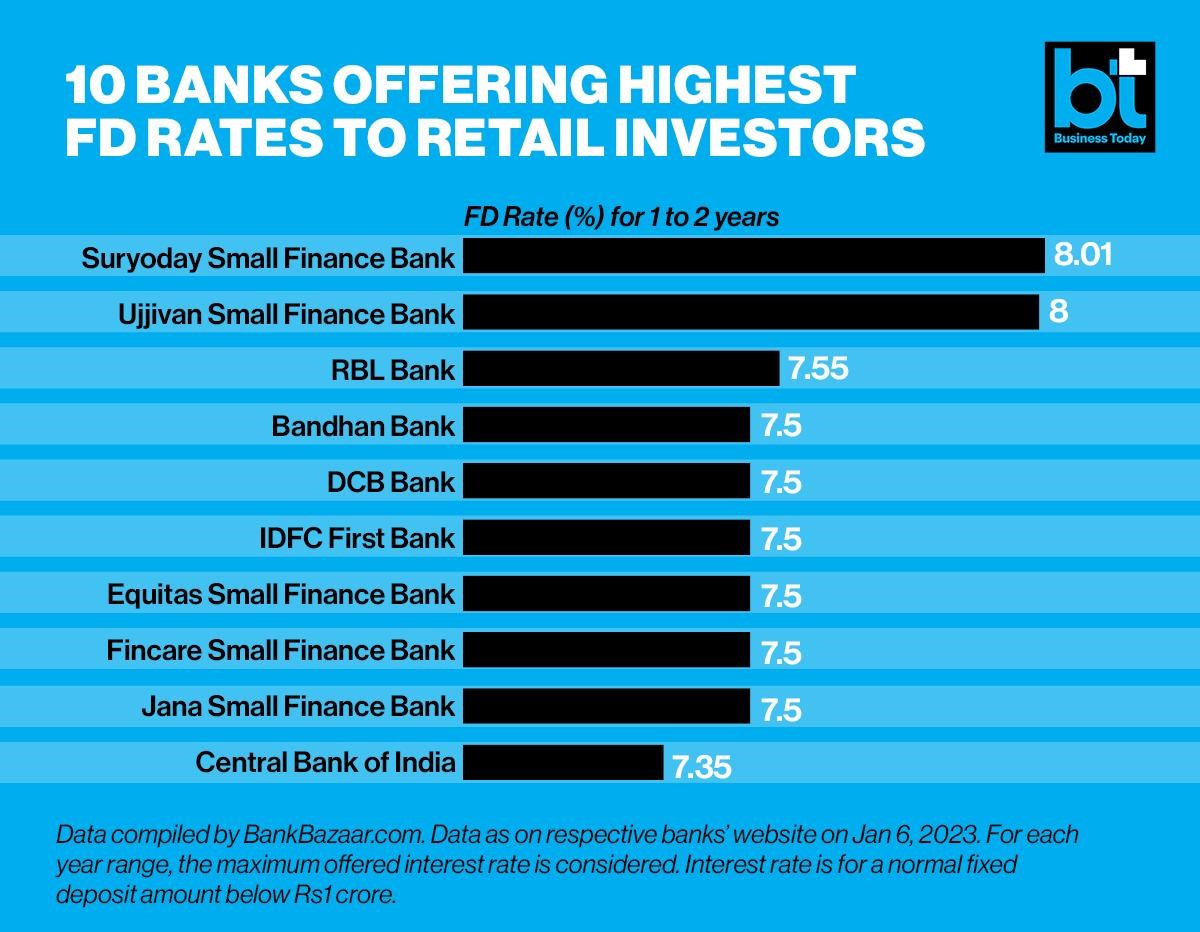How Interest Rate Changes Affect the Profitability of Banking?
When interest rates rise, profitability in the banking sector increases. This is in part because higher interest rates are normally a sign of a booming economy. But one should understand that profits rise mostly because the banks can earn a higher yield on every rupee they invest. Let us see how.
- Banks make money by accepting cash deposits from their customers in return for interest payments and then investing that money elsewhere. Their profit is the difference between the interest they pay their depositors and the yield they make through investing.
- Higher interest rates increase the yield on their investments. Interest rates can go too high. If they reach a level that makes businesses and consumers hesitate to borrow, the lending side of banking starts to suffer. Interest rates and banks profitability are connected, with banks benefiting from higher interest rates.
- When interest rates are higher, banks make more money by taking advantage of the greater spread between the interest they pay to their customers and the profits they earn by investing.
- A bank can earn a full percentage point more than it pays in interest simply by lending out the money at short-term interest. The rest is invested. Some of it is invested in loans to businesses and consumers. Much of it is invested in short-term Treasury securities.
- This cash originates from Treasury transactions and flows constantly through the banking system. Even the very low interest rates that short-term Treasury notes yield are greater than the interest the banks pay to their customers.
- It’s like the way that an increase in oil prices benefits oil drillers. They make more money for the same expenditure of resources.
Example of Interest Rate Impact on Bank Earnings
- Consider a bank that has $1 billion on deposit. The bank pays its customers an annual percentage rate of 1% interest, but the bank earns 2% on that cash by investing it in short-term notes.
- The bank is earning $20 million on its customers’ accounts but returning only $10 million to its customers.
- If the central bank then raises rates by 1%, the federal funds rate will rise from 2% to 3%. The bank will then be yielding $30 million on customer accounts. The payout to customers will still be $10 million.
- The bank may be forced to raise the interest rates it pays on deposits if higher interest rates persist. But the vast majority of its customers won’t go in search of a better return for their savings.
- This is a powerful effect. Whenever economic data or comments from central bank officials hint at rate hikes, bank stocks rally first.
- When interest rates rise, so does the spread between long-term and short-term rates. This is a boon to the banks since they borrow on a short-term basis and lend on a long-term basis.
Another Way Interest-Rate Hikes Help
- Interest rate increases tend to occur when economic growth is strong. Businesses are expanding, and consumers are spending. That means a greater demand for loans.
- As interest rates rise, profitability on loans increases, as there is a greater spread between the federal funds rate that the bank earns on its short-term loans and the interest rate that it pays to its customers.
- In fact, long-term rates tend to rise faster than short-term rates. This has been true for every rate hike. We could thus see that It is a reflection of the strong underlying conditions and inflationary pressures that tend to prompt the Federal Reserve to increase the interest rates it charges.
- It’s also an optimal convergence of events for banks, as they borrow on a short-term basis and lend on a long-term basis.
- Another factor to note is that if interest rates rise too high, it can affect bank profits as demand from borrowers for new loans suffers and refinancings decline.
Are Higher Interest Rates Good for Stocks?
- Generally, higher interest rates are bad for most of the stocks. A big exception is bank stocks, which thrive when rates rise. For everybody else, it’s a delicate balancing act. Interest rates rise because the economy is booming. But increasing interest rates make businesses and consumers more cautious about borrowing money.
- This is why the Regulator often raises or lowers the interest rates (REPO rate and Reverse REPO rate) it charges to the banks to cool the economy or rev it up.
Are Higher Interest Rates Good for Bonds?
- When interest rates increase, new bonds that are issued now have to carry a higher rate of return in order to be attractive to buyers.
- However, the owners of older bonds are stuck with their lower rates of return. On the secondary market where bonds are resold, their value will decrease to compensate for the lower return. The investor who holds bonds in an investment portfolio doesn’t lose money but does lose the opportunity to invest in higher-yield bonds.
- t rates.
- Moreover, higher interest rates tend to reflect a healthy economy. Demand for loans to businesses and consumers should be high, with the bank making better returns on those loans.
- There’s the risk that interest rates will go too high, discouraging borrowers.







